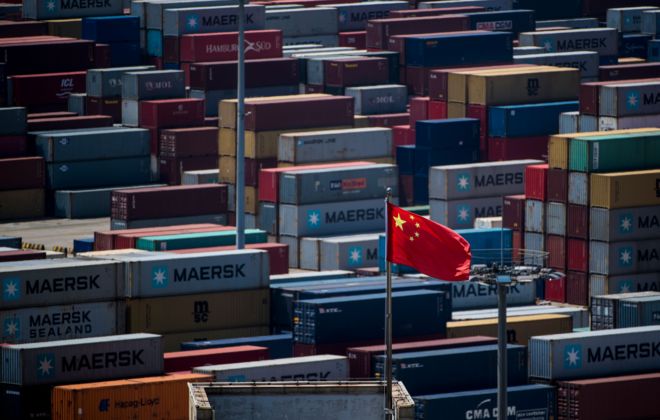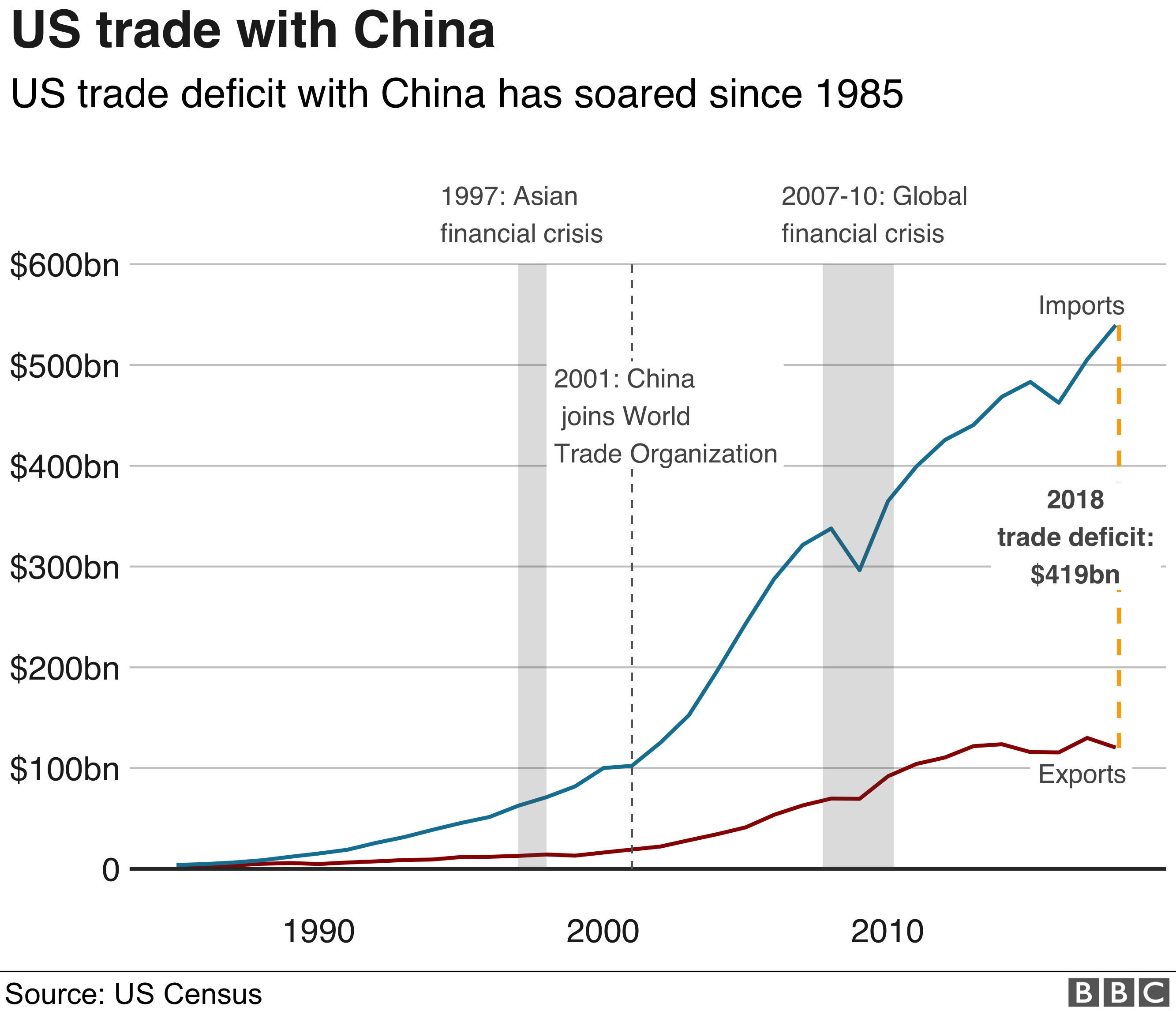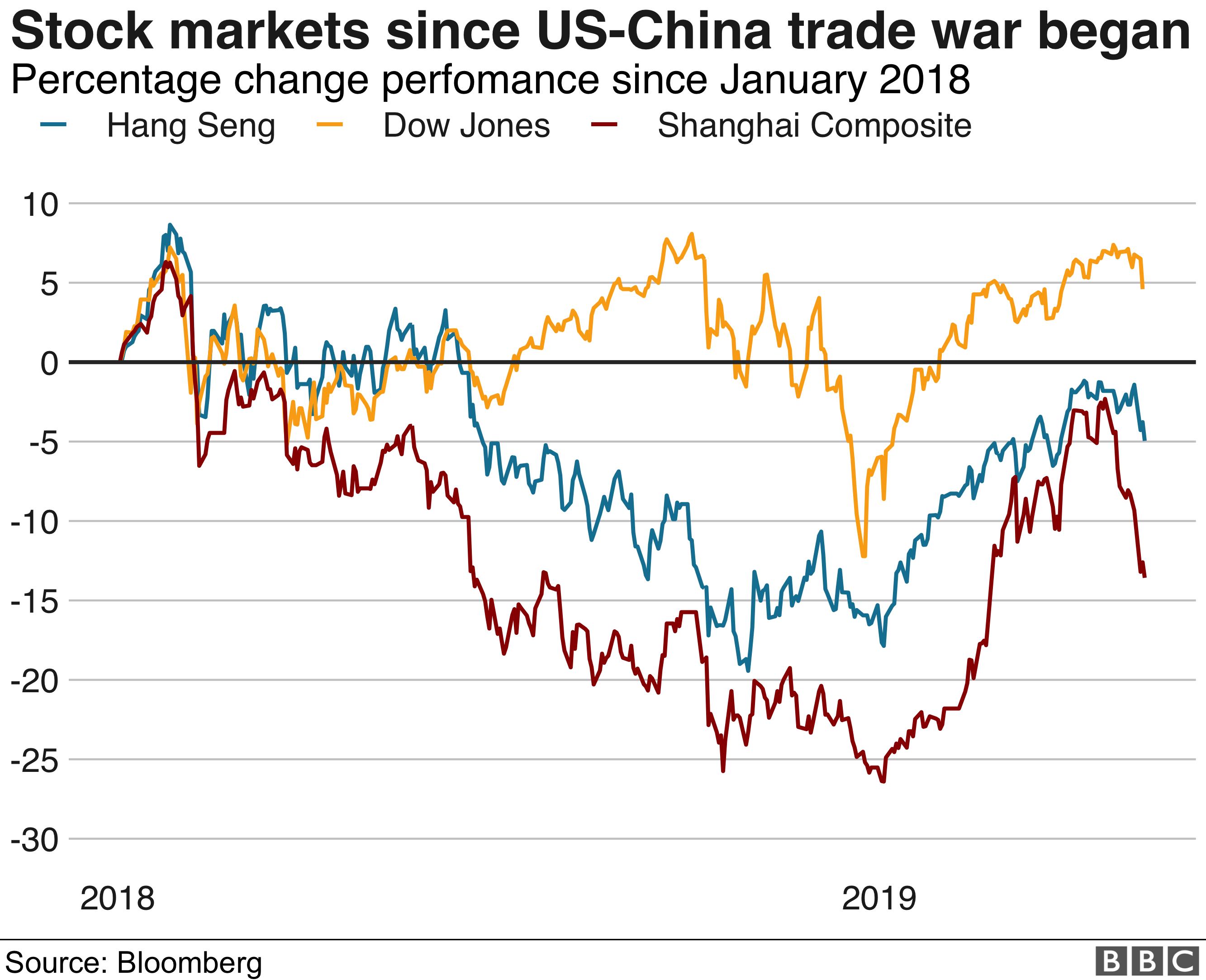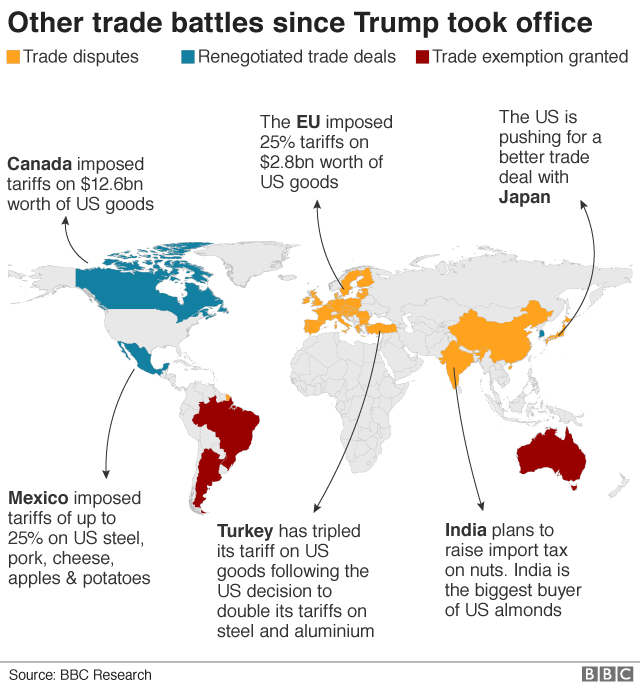 GETTY IMAGES
GETTY IMAGES
The trade war between the US and China - which seemed to be nearing an end - has suddenly escalated with the threat of new tariffs.
US President Donald Trump vowed to more than double tariffs on $200bn (£153bn) of Chinese goods on Friday and to introduce fresh ones "shortly".
Despite this, the Chinese are starting two days of negotiations with the US.
The US president's threat to raise tariffs comes amid claims Beijing is trying to row back on a trade deal.
The world's two largest economies have already imposed duties on billions of dollars worth of one another's goods.
A further escalation in the trade dispute would create renewed uncertainty for businesses and consumers, hurting the world economy.
Here are some of the central issues in the US-China trade dispute:
1) How has the US trade deficit grown?
The US, which accuses China of unfair trading practices, launched a trade war against China last year.
Not only does the US accuse China of stealing intellectual property, but it wants Beijing to make changes to its economic policies, which it says unfairly favour domestic companies through subsidies.

The US also wants China to buy more US goods to rein in its lofty $419bn (£321.2bn) trade deficit with China.
The trade deficit is the difference between how much the US imports from other countries and how much it exports. Reducing the gap is a key part of Mr Trump's trade policies.
2) What tariffs have been imposed so far?
The US imposed tariffs on $250bn worth of Chinese products last year. Beijing has retaliated with duties on $110bn worth of American products.
Tariffs on $200bn worth of Chinese goods were due to rise to 25% from 10% at the start of this year, but this hike was delayed.

Now, Mr Trump is saying this increase will go ahead on Friday because talks with Beijing are progressing "too slowly".
On top of that, he has vowed to slap 25% duties on another $325bn of Chinese goods "shortly".
3) What products could be affected?
The Chinese products hit by US tariffs since the beginning of the trade war have been wide-ranging, from machinery to motorcycles.
In the latest round, the US imposed 10% duties on $200bn worth of Chinese products including fish, handbags, clothing and footwear.
Those products will be the ones targeted with a tariff hike from 10% to 25%, if it goes ahead this week.

China accuses the US of starting the biggest trade war in economic history. It has targeted US goods ranging from chemicals, to vegetables and whiskey.
It has also strategically targeted products made in Republican districts, and goods that can be purchased elsewhere, like soybeans.
4) Has the trade war hit the markets?
The US-China trade war has been a great source of uncertainty for financial markets over the past year. That uncertainty has weighed on investor confidence around the world, and has contributed to losses.
In 2018, Hong Kong's Hang Seng index fell more than 13% and the Shanghai Composite slumped nearly 25%.
Both indices have recovered some ground this year and are up 12% and 16% respectively so far in 2019.

By comparison, the Dow Jones Industrial Average fell nearly 6% in 2018 and is already up some 11% this year.
The yuan fell over 5% against the US dollar last year, before broadly stabilising in 2019, according to Reuters.
5) What other trade battles are going on?
The US-China trade war has had a knock-on effect on other countries, and the global economy.
The International Monetary Fund (IMF) said the escalation of US-China trade tension was one factor to have contributed to a "significantly weakened global expansion" late last year as it cut its 2019 global growth forecast.
Some countries may also be indirectly impacted - especially those that are important trading partners for the US or China - or play key roles in their supply chains.

The battle with China is one of a series of trade fights the US has waged with other countries over the past year.
Mr Trump has imposed taxes on imports from Mexico, Canada and the European Union, to encourage consumers to buy American products. All of these countries retaliated with tariffs on US goods.
No comments:
Post a Comment